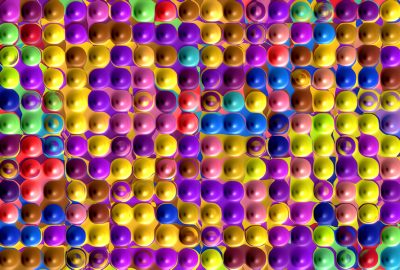White paper graphic design advice is valuable not only for the professional graphic designers who are asked to design white papers, but for the people who write papers, so they can structure them in ways that cooperate with design practices. Whether you’re a graphic designer or just want to better understand how white papers should be designed, this post includes a wide range of information.
White paper graphic design begins with structure
White papers are different from the other types of communications materials graphic designers may be asked to work with. For one thing, they tend to be much longer. A typical brochure might contain a couple hundred words, but white papers are generally between 1500 and 5000 words, which usually works out to 6 to 20 printed pages. White paper writers don’t identify an arbitrary length for white papers. Instead, they let the information drive the length, because the quality of information is more important than the quantity.
Choosing a white paper title
The title of a white paper is usually chosen by the writer to convey a serious, straightforward message. For example, in a product brochure, you might use a headline such as “Process three times as many radishes with our veeblefetzers.” However, something that promotional won’t appeal to someone looking for objective information. Titles such as “Evaluating processing alternatives for radish production” or “Cross-cutting and spiral-coring: an engineering comparison” will suggest the white paper offers a more factual, balanced approach.
Being with an overview
White papers often begin with a short section describing the reader’s problem or challenge. This kind of opening builds a bond, as readers see the paper contains a solid understanding of the situation keeping them awake at night.
Explore potential solutions
An effective white paper typically explores the different types of solutions that have been developed in response to the problem or challenge. After a general discussion, the paper may examine the advantages and disadvantages of each of those solutions. The most convincing approach is to focus on facts, keeping the content general. If you’ve included the right information and presented it in the right way, the reader will come to that conclusion on their own — and that’s a far more compelling strategy than trying to tell them how to think.
Sidebars are helpful
If you want to highlight a particular concept or include something that’s interesting to the reader but may not fit within the body of the white paper, consider placing it in a “sidebar.” These smaller articles, text boxes, or lists that are separate from the main copy add visual interest, drawing the reader’s eye and helping them increase their knowledge.
Why white paper graphic design matters
Graphic designers are accustomed to making pieces visually attractive and colorful, but in the case of white papers, that can be counterproductive, as it makes them appear to be advertising materials. Readers expect a white paper to be a serious, non-promotional document. Plus, many of the audiences that white papers target — such as engineers, CFOs, and CEOs — tend to distrust materials that appear to be more “salesy” than informative.
Overall white paper design characteristics
Most white papers are set up to look like trade magazine articles with fewer pictures. If your product or service lends itself to charts or graphs, they can strengthen your message. It’s okay to include photographs if they support and add value to your message. (We’ll discuss more about graphic elements shortly.) Designing to enhance readability is critical because the information in your white paper is valuable to the people who will read it.
The importance of navigation and cues
An effective white paper design will include features that make it easier for readers to navigate the content. For example, breaking the sections into easy-to-read chunks with straightforward headlines and paragraph headings will guide readers to the information they need. You can use subheads and bold or underscored lead-ins to make it easy for people who are skimming through the white paper to find the information they’re after.
Indenting paragraphs may seem old-fashioned, but older readers have read that way since childhood. Using subheads, bold lead-ins, bullet points, and similar devices will guide the reader’s eyes and make the hierarchy of information clearer.
Consider the audience’s eyes
A common mistake designers (particularly those in their 20s and 30s) make when preparing white papers is forgetting that many of the people who will read them are old enough to wear bifocals. The designers use small type, odd colors, reverse type, and other techniques that work just find for twentysomethings, but that render white papers unreadable for anyone who’s made it to their mid-forties.
Additionally, some designers jump at the opportunity to use the latest and most fashionable typefaces (fonts). But the most readable typefaces tend to be some of the most familiar, particularly when used in body copy. Serif faces like Times, Palatino, Century, Garamond and Goudy may seem ho-hum, but are much easier on the eye, especially in long text.
Think twice before going with anything smaller than 10-point type. In most typefaces, 11-point body text works just fine. Another way to enhance readability is to increase the leading (spacing) between lines of text. Leading that’s at least 25 percent more than type size (for example, 11-on-14) is usually ideal.
Don’t shift to reverse
Reversing type (light type on a dark background) is visually striking, but it’s effective only when it’s readable. It’s a good idea to increase the size of type being reversed by a point or so. And while serif type is normally more readable, sans serif typefaces generally provide better results when reversed.
Space and color considerations
The type and the background should have enough contrast so it’s readable. In addition, when placing two colors side-by-side, watch the contrast, too. As people age, their eyes are less able to perceive subtle differences in color. Some colors – such as very pale yellow or pink – may actually appear to be white to older eyes, so a light yellow screen on a dull white paper stock may not even be noticed. Healthy use of white space keeps information organized and presentable, so it can reduce visual fatigue.
Creating effective graphics
White paper graphics can provide a powerful addition to a white paper. Organizations typically develop white papers to convince readers that their product, service, or strategy is the best approach for a particular need, and carefully selected graphics can amplify the messages they want to convey while making it easier for readers to understand.
Should you use photos?
Professional-quality photographs can make your white paper more understandable. Suppose your company is an auto parts manufacturer that also makes lawnmower sparkplugs. To encourage sparkplug sales, you could develop a white paper explaining how to perform a basic engine tune-up, using photos with step-by-step instructions. One thing you shouldn’t use: those tired stock photos featuring oddly happy, terrifyingly alert people in business meetings.
What about drawings?
Sometimes, the best way to support your message is by including drawings. Your company may make a part that offers greater longevity than your competitors’ parts, so you develop drawings that point to the key features and why they result in better performance. Or you may choose to use a cutaway diagram so you can better illustrate key features and benefits.
Other graphic supports
If your information is heavy on statistics and other data, visually simplify it for your readers by turning it into charts and graphs. Often, a simple chart or graph can be more effective at explaining a concept than an entire paragraph of text. Tables can be an excellent tool when you have long lists of information you want to share, or when you want to make a head-to-head comparison between what you offer and that of your competitor(s).


